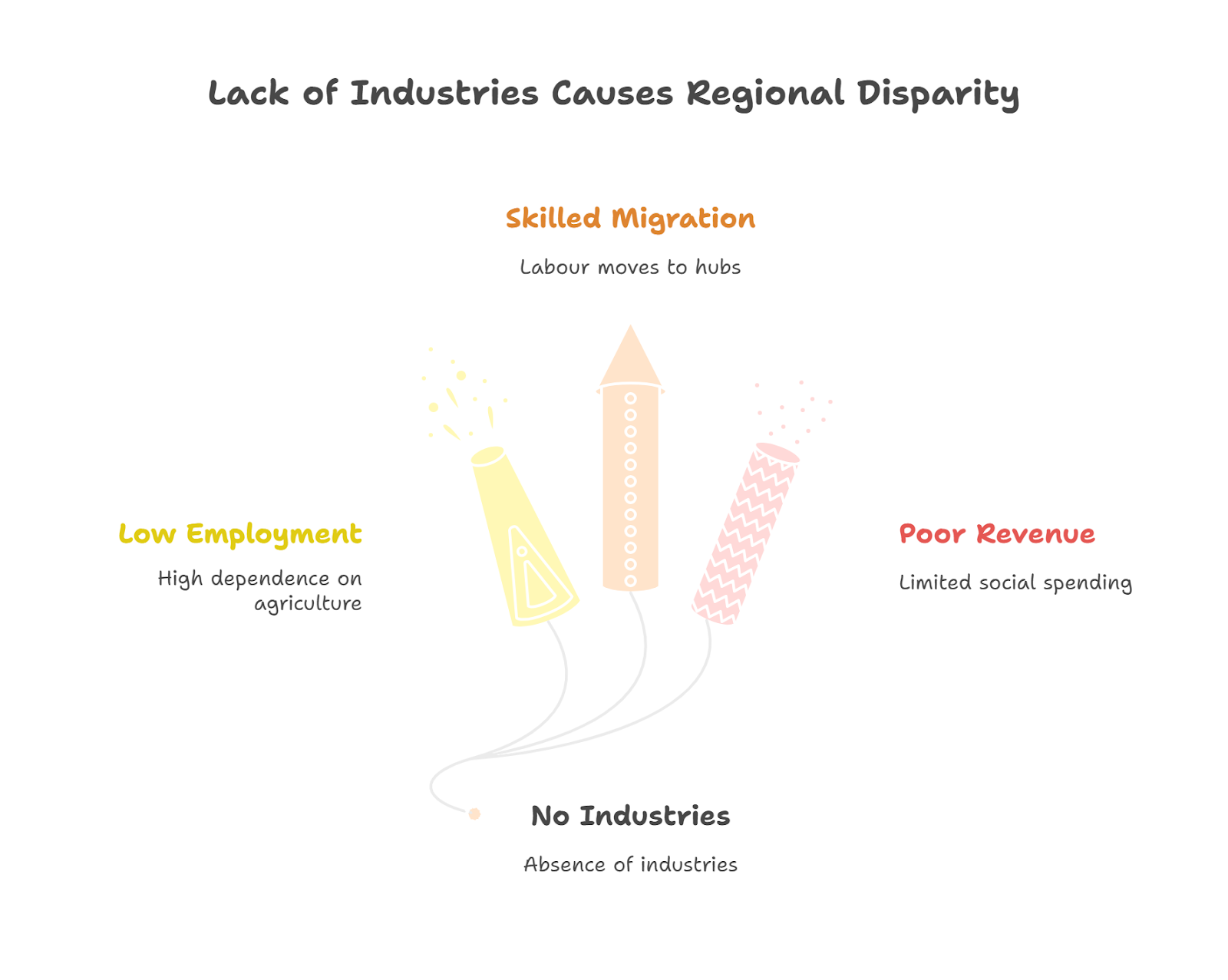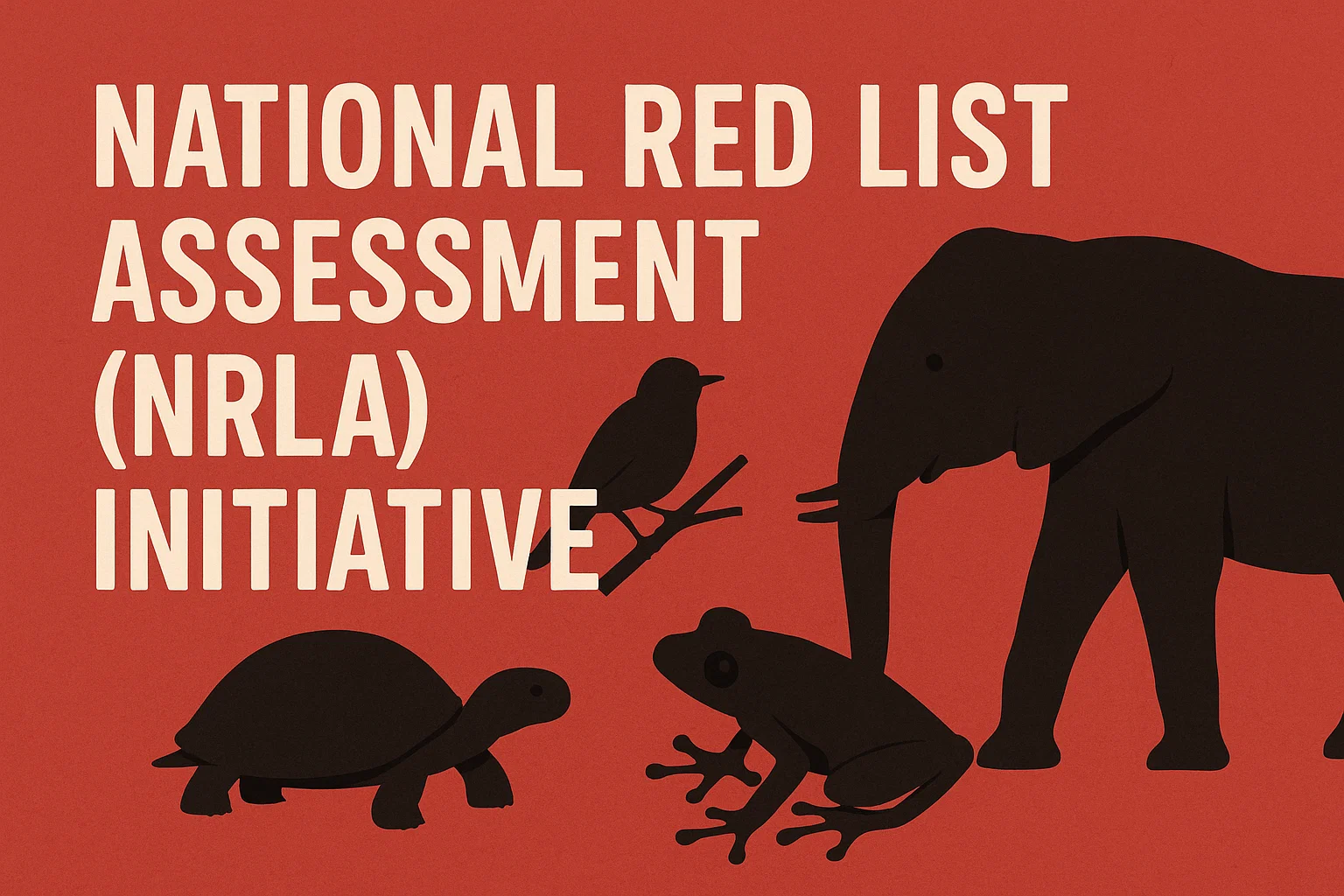Regional Disparity in Industrial Development in India
Regional Disparity in Industrial Development: A Critical Challenge for India’s Growth
Context: The issue of regional disparity in industrial growth has resurfaced after the Standing Committee on Finance (2025) recommended an action plan for the even distribution of industries across states. This comes amidst opposition allegations of bias in investment approvals and at a time when India seeks balanced growth to sustain its 8% annual GDP target while reducing migration pressures and regional inequalities.
What is Regional Disparity?
- Regional disparity refers to the uneven distribution of economic activities, infrastructure, and opportunities across different regions of a country.
- In India, disparities manifest in terms of per capita income, industrial presence, employment opportunities, and quality of life.
- While states like Maharashtra, Gujarat, and Tamil Nadu attract the bulk of industries, states in central and eastern India lag behind, perpetuating economic inequality.

How can the Lack of Industries Lead to Regional Disparity?
For example, Bihar and Jharkhand, despite being resource-rich, contribute little to India’s manufacturing output due to inadequate industrialisation, as highlighted in Down to Earth (2023).
Why is there a Need for the Even Distribution of Industries?
- Equitable economic growth: The Economic Survey 2022-23 stressed that uneven industrialisation slows India’s ambition of becoming a $5 trillion economy.
- Reduction of migration pressures: Industrial clusters across all states would reduce overpopulation in mega-cities like Mumbai and Bengaluru.
- Political and social stability: Unequal growth often fuels regional discontent, as seen in demands for special status from backwards states.
The Standing Committee on Finance (2025) also emphasised that equitable distribution is vital for “more balanced and sustainable growth.”
How Can it be Done?
- Incentivised Industrial Policy: Special packages for industries in underdeveloped states (like North-East Industrial Development Scheme, 2017).
- Infrastructure Development: Expanding transport, energy, and digital networks to landlocked and backward states.
- Public Sector Enterprise (PSE) Reforms: Speeding up disinvestment/closure of non-strategic CPSEs and reinvesting in lagging states.
- Cluster-Based Development: Encouraging MSME clusters beyond traditional industrial belts.
- Tailored Fiscal Reforms: Economic Survey 2023 suggests fiscal discipline in highly indebted states, enabling them to attract investment.
Case Study: Andhra Pradesh leveraged central incentives post-bifurcation to attract pharma and electronics industries, reducing dependence on Hyderabad.
Were Efforts Made in Post-Independent India to Ensure Even Distribution of Industries?
Yes. India’s Five-Year Plans consistently addressed balanced industrialisation:
- Second Five-Year Plan (1956-61): Advocated setting up core industries in backward regions (e.g., Bhilai Steel Plant in Chhattisgarh).
- Backward Area Development Programme: Introduced incentives for industries in underdeveloped states.
- Special Economic Zones (SEZs) and Industrial Corridors: Delhi-Mumbai Industrial Corridor and East Coast Economic Corridor aimed to spread industrialisation.
However, as the NITI Aayog’s Strategy for New India @75 observed, implementation gaps, poor infrastructure, and political bias limited success, keeping regional disparities intact.



